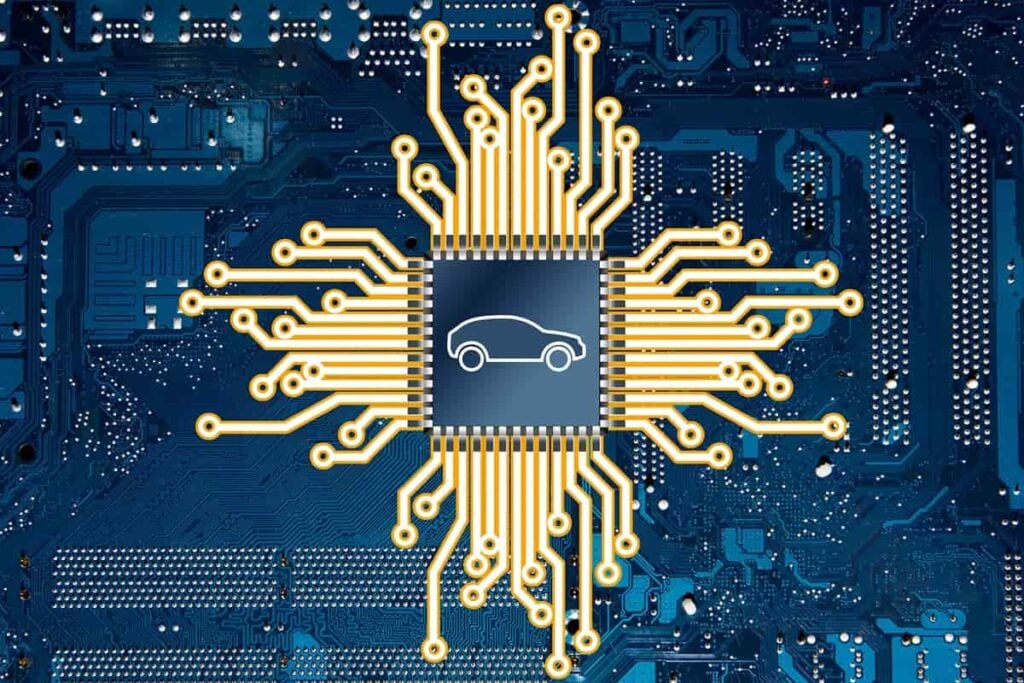How Smart Electric Motors Could Reduce Carbon Emissions
Table of contents

About two years ago we wrote about the fastest car in the world – just because we could. The thing is basically a rocket with wheels. While no doubt it offers a hell of a ride, the only place you’re taking it is on the highway to hell. Such a contraption is not very eco-friendly, burning a gallon of gas every half mile. Those who feel the need for speed but not pollute are probably quite happy with the electric vehicles (EVs) hitting the market. EV startup Lucid Motors, for instance, has produced an electric motor and drivetrain compact enough to fit in your carry-on luggage. It boasts 1,080 horsepower and can hit 60 mph in 2.5 seconds – a family sedan faster than a Maserati supercar. A new generation of smart electric motors promise not only to disrupt your daily commute but significantly reduce global carbon emissions.
About Electric Motors
It seems like lithium battery technologies and other types of energy storage systems get all of the press when it comes to greening the electrical grid. Maybe that’s because the basic design behind the average electric motor hasn’t changed much since the 19th century, and most of the high-powered ones in use today are based on work by Nikolai Tesla in the late 1800s.
We’re MBAs not mechanics, so we’ll refer you to an excellent electric motor webpage for the nuts and bolts of how these machines operate. You can also geek on the particulars about how Tesla’s AC induction motor works at the same website. But we’ll save you a click with this very brief and basic definition: Most electric motors operate through the interaction between the motor’s magnetic field and an electric current that generates torque and causes the motor’s shaft to turn. Maybe a visual would help:

Electric motors are vastly superior to gas-combustion engines in terms of efficiency, power, and simplicity. And you find them everywhere, not just in Teslas zooming up the hills of San Francisco. They are used in everything from spinning your computer’s hard drive around to washing the dishes to keeping things cool in buildings. However, electric motors mainly rely on the energy grid, which is slowly shifting to renewable sources like wind and solar, but 63% of the energy generated in the United States is still from fossil fuels. In fact, electric motors are the single biggest consumer of electricity globally, according to the International Energy Agency, accounting for 45% of global power consumption.
The ESG-investor types are probably thinking at this point that there must be at least a couple of companies out there developing smarter electric motors that work more efficiently.
Software-Driven Smart Electric Motor
Of course there are, beginning with a Silicon Valley-based Turntide Technologies. The company’s marketing mantra is that it will someday replace all of those outdated electric motors with its Smart Motor System, which uses machine learning to wring every watt of potential energy. Founded in 2013, the company has raised about $103 million, with a $58 million chunk coming just this year across two different rounds. The startup formerly known as Smart Motor Company has attracted investments from both BMW and Amazon’s $2 billion Climate Pledge Fund. Another notable name is Tony Fadell, the “father of the iPod” and co-founder of smart home product manufacturer Nest Labs that Google gobbled up some years ago.
Turntide Technology’s smart electric motor is based on a proven model called a switch reluctance motor, which is considered so reliable that it’s used inside nuclear reactor cores. However, the current generation isn’t terribly efficient and requires expensive raw materials like rare earth metals to produce. While the startup has tweaked the hardware design to make it leaner and greener by using commodity parts, the secret sauce is in the sensors and software that continuously optimizes the engine’s output. The cloud-connected motor continuously transmits real-time data for remote monitoring that can detect possible signs of degradation or faults in the motor or equipment, for example.

The company has initially focused its business on retrofitting HVAC systems, which are reportedly (but we can’t confirm a reliable primary source) responsible for 40% of global CO2 emissions. Turntide claims its retrofits for customers – Amazon, Five Guys, and Sprouts, among others – are driving average energy savings of 64% from their HVAC systems. How? For example, if a building is getting too hot or too cold, Turntide’s Smart Motor System can slow the speed of the motor, lowering the output of conditioned air and eliminating excess energy waste and consequently cost.

Turntide definitely pushes the ESG angle throughout its business, claiming that if the entire HVAC sector adopted its tech, global emissions from fossil fuels would drop by 10%. That’s something like adding seven new Amazon rainforests to the planet (another company trope) – or simply eliminating Amazon.com. While we haven’t seen the math behind the numbers, it’s obvious that Turntide’s smart electric motors are generating interest from some pretty smart money.
Update 03/02/2021: Turntide Technologies has raised $80 million in funding to expand the development and production of the Smart Motor System to meet growing demand, and extend its use into new applications such as refrigeration and pumping systems. This brings the company’s total funding to $207.1 million to date.
Hardware-Driven Smart Electric Motor
Whereas Turntide Technologies relies on the magical powers of software, a Texas startup founded by a father-and-son duo say they have invented a new type of smart electric motor. Founded in 2014, Linear Labs has raised about $82 million, though its $6 million venture round in October was the largest to date, as most of its capital came through a $69 million grant from the city of Fort Worth. The company was originally started by Brad and Fred Hunstable to help bring electricity and clean water to underdeveloped nations. The younger Hunstable, Brad, was the CEO of Ustream, a video streaming company that IBM acquired for $150 million in 2016.

An inventor and engineer who worked in nuclear energy, Dad (Fred) is the brains behind the Hunstable Electric Turbine (HET), which the company claims represents an “entirely new methodology in electric motors and generators in nearly 120 years.” Again, we’re MBAs and not mechanics, so here’s how Linear Labs explains its innovative design: The HUT is “based upon a breakthrough magnetic flux tunnel featuring both dual axial flux and dual radial flux rotors tied together around one stator, effectively creating four motors working as one.”

While it sounds like you could use the HET to travel back to the future, the takeaway message is that the Hunstables claim their electric motor can generate two to five times the torque of existing motors or generators of similar size based on their design. Electrical engineers can read the technical details in an article on the HET motor by IEEE Spectrum Magazine, which does provide a better layperson’s explanation of the smart electric motor’s design:
Unlike typical designs, the synchronous DC motor has no superfluous end windings, so 100 percent of its copper material goes into energy conversion. A typical motor’s copper content could be reduced by 30 percent while generating equivalent torque, the Hunstables say. So for a given torque level, the HET consumes significantly less energy than competing designs.
Like Turntide, Linear Labs is eyeballing a range of industries, including the HVAC sector, though initially it appears the startup is targeting the micromobility and last-mile markets such as electric scooters and drones, as well as the larger EV market.
Conclusion
Sometimes you don’t know what’s around you until you look around. If companies like Turntide Technologies and Linear Labs can really produce an electric motor that’s better and cheaper than today’s technology, then they could help ignite a real LED-type disruption in one of the oldest and most ubiquitous industrial components around today. It’s now always the sexiest car that wins the race, after all.
Sign up to our newsletter to get more of our great research delivered straight to your inbox!
Nanalyze Weekly includes useful insights written by our team of underpaid MBAs, research on new disruptive technology stocks flying under the radar, and summaries of our recent research. Always 100% free.















